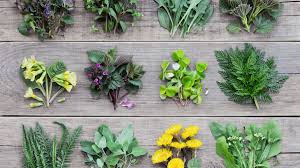
Breaking News
 This Is The Most Energy-Rich Molecule In The World
This Is The Most Energy-Rich Molecule In The World
 Jimmy Dore Compares Trump's Endorsement of Overthrowing Libya to His Actions in Venezuela
Jimmy Dore Compares Trump's Endorsement of Overthrowing Libya to His Actions in Venezuela
 Pfizer mRNA Found in Over 88% of Human Placentas, Sperm, and Blood -- and in 50% of Unvaccinated...
Pfizer mRNA Found in Over 88% of Human Placentas, Sperm, and Blood -- and in 50% of Unvaccinated...
Top Tech News
 Build a Greenhouse HEATER that Lasts 10-15 DAYS!
Build a Greenhouse HEATER that Lasts 10-15 DAYS!
 Look at the genius idea he came up with using this tank that nobody wanted
Look at the genius idea he came up with using this tank that nobody wanted
 Latest Comet 3I Atlas Anomolies Like the Impossible 600,000 Mile Long Sunward Tail
Latest Comet 3I Atlas Anomolies Like the Impossible 600,000 Mile Long Sunward Tail
 Tesla Just Opened Its Biggest Supercharger Station Ever--And It's Powered By Solar And Batteries
Tesla Just Opened Its Biggest Supercharger Station Ever--And It's Powered By Solar And Batteries
 Your body already knows how to regrow limbs. We just haven't figured out how to turn it on yet.
Your body already knows how to regrow limbs. We just haven't figured out how to turn it on yet.
 We've wiretapped the gut-brain hotline to decode signals driving disease
We've wiretapped the gut-brain hotline to decode signals driving disease
 3D-printable concrete alternative hardens in three days, not four weeks
3D-printable concrete alternative hardens in three days, not four weeks
 Could satellite-beaming planes and airships make SpaceX's Starlink obsolete?
Could satellite-beaming planes and airships make SpaceX's Starlink obsolete?
Ten wild edibles in North America that could save you in a survival situation

Across North America's forests, fields, and wetlands grows an unregulated apothecary — plants densely packed with vitamins, minerals, and healing compounds. But this bounty comes with a caveat: for every life-sustaining wild green or berry, there exists a nearly identical twin capable of inducing organ failure.
Survival isn't just about stockpiling beans and bullets — it's about recognizing the land's hidden abundance while avoiding its lethal decoys. This is primal knowledge, the kind that sustained indigenous cultures for millennia and can keep modern foragers alive when supply chains crumble.
Key points:
Wild edibles from dandelions to cattails provide emergency calories, critical nutrients, and natural medicine.
Deadly lookalikes like death camas (vs. wild garlic) and horse nettle (vs. stinging nettle) demand 100% identification certainty.
Foraging ethics protect ecosystems: Never over harvest, avoid polluted areas and respect private property.
Processing methods matter: leaching acorns and neutralizing nettle stings make these otherwise toxic plants edible.
Saw palmetto berries (immune support) and red clover (blood purifier) offer medicinal options.
Wild food as survival insurance
The dandelion (Taraxacum officinale), dismissed as a lawn weed, carries more vitamin A than carrots and enough potassium to rival bananas. Its root, when roasted, becomes a caffeine-free coffee substitute rich in prebiotic inulin — a gut health essential when processed foods vanish. But complacency kills: false hawksbeard and catsear mimic dandelion leaves, though their branched flower stems and lack of milky sap betray them.

 Really good questions...
Really good questions... First totally synthetic human brain model has been realized
First totally synthetic human brain model has been realized Mach-23 potato gun to shoot satellites into space
Mach-23 potato gun to shoot satellites into space

